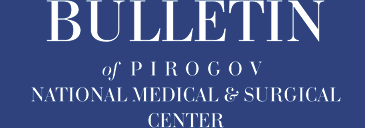Authors
Khamitov R.G., Botov A.V., Shilkin D.N., Yudina O.V., Shestakov E.A., Fedyk O.V., Bulgakov A.V., Stoyko Yu.M., Zhiburt E.B.
Pirogov National Medical and Surgical Center, Moscow
Abstract
The article presents a clinical observation of a patient with sigmoid colon cancer and anemia requiring transfusion support with donor erythrocytes. The patient was found to have anti-erythrocyte antibodies that agglutinated with 3 screening and 11 identification panel erythrocytes. Agglutination was also detected in the autocontrol and with 18 samples of phenotype-compatible donor erythrocytes. The above information allowed us to assume the presence of autologous antibodies to common erythrocyte antigens with low hemolytic activity in the patient. Due to the increasing clinical signs of anemic hypoxia, a decision was made to transfuse the least incompatible blood. Based on the results of automated immunohematological testing, 3 such samples of erythrocyte leukodepleted suspension in an additional PAGGSM solution were selected. After conducting a biological test, a venous blood sample was collected and centrifuged. No visual signs of hemolysis were detected. The patient was discharged in a satisfactory condition.
To detect alloantibodies in patients with polyagglutination, it is optimal to include in clinical guidelines methods of adsorption of autoantibodies by autologous or allogeneic erythrocytes. Transfusion of partially phenotype-compatible blood (ABO, D, C, E, c, e, k) is advisable to prevent patient death from anemia. It is recommended to transfuse one dose of maximally compatible leukodepleted erythrocyte suspension in PAGGSM, slowly and with invasive hemolysis monitoring at the end of the biological compatibility test.
Keywords: anemia, polyagglutination, blood transfusion, patient blood management, incompatibility, evidence-based medicine.
References
1. Shevchenko YL, Karpov OE, Zhiburt EB. Blood transfusion: history and modernity (on the 100th anniversary of blood transfusion in Russia). Vestnik Nacional’nogo mediko-hirurgicheskogo centra im. N.I. Pirogova. 2019; 14(4): 4-11. (In Russ.) doi: 10.25881/BPNMSC.2020.29.78.001.
2. Zhiburt EB, Kuznetsov SI. It is impossible to select red blood cells for transfusion for a patient. Six situations when transfusion of incompatible blood is acceptable. Handbook of the Head of the Clinical Diagnostic Laboratory. 2019; 11: 22-27. (In Russ.)
3. Akselrod BA, Balashova EN, Bautin AE, et al. Clinical use of red blood cell-containing components of donor blood. Hematology and Transfusiology. 2018; 63(4): 372-435. (In Russ.)
4. Zhiburt EB, Madzaev SR, Chemodanov IG. Complications of blood donation and transfusion. M.: Pirogov National Medical and Surgical Center, 2019. 54 p. (In Russ.)
5. Zhiburt EB, Madzaev SR, Shestakov EA. Patient’s blood management. 2nd edition. – M.: Pirogov National Medical and Surgical Center, 2021. 121 p. (In Russ.)
6. Zhiburt EB. Pediatric transfusiology. M.: Geotar-Media, 2023. 344 p. (In Russ.)


